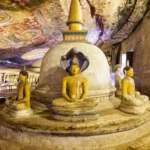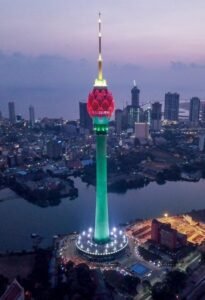Sri Lanka is a tropical paradise blessed with some of the most stunning beaches in the world. Whether you’re looking to catch some waves, swim in crystal-clear waters, or simply relax by the shore, Sri Lanka’s coastline offers the perfect beach experience. With over 1,300 kilometers of coastline, the island is home to diverse beaches that cater to every type of traveler—from adventure enthusiasts to those seeking tranquility.
In this guide, we’ll take you through the best beaches in Sri Lanka for surfing, swimming, and relaxation, helping you plan your perfect beach vacation. Plus, with Tranz Ceylon Tours & Travels, you can explore these beautiful beaches with ease, all while enjoying personalized tours and seamless travel arrangements.
Best Beaches for Surfing in Sri Lanka
Sri Lanka is considered one of the top surf destinations in the world. From beginners to pros, the island offers perfect surf spots with consistent waves, ideal for surfers of all levels.
1. Arugam Bay – The Surf Capital of Sri Lanka
Arugam Bay, located on the east coast of Sri Lanka, is famous for its world-class surf breaks. It is a must-visit for surf enthusiasts, especially from April to October, when the waves are at their best. The main surf point, Main Point, is perfect for experienced surfers, while Baby Point offers gentler waves for beginners.
Why Visit: Arugam Bay is known for its laid-back atmosphere, vibrant surf culture, and stunning beach views.
Tip: Book your surf lessons and tours with Trance Ceylon Tours & Travels for the best local surf instructors and guided surf trips.
2. Hikkaduwa – Ideal for Beginners
On the southwest coast, Hikkaduwa is a beach town popular with both local and international surfers. The shallow reefs and consistent waves make it a great place for beginner surfers to catch their first waves. The town also has a lively vibe with beach bars and seafood restaurants.
Why Visit: In addition to surfing, Hikkaduwa is famous for its beautiful coral reefs, perfect for snorkeling.
3. Weligama – Perfect for Learning to Surf
Weligama is another great destination for beginner surfers. The beach features calm, gentle waves that make it ideal for learning the sport. The long stretch of beach offers plenty of space to practice and is home to several surf schools.
Why Visit: Weligama is quieter than Hikkaduwa and Arugam Bay, offering a more relaxed surfing experience for those just starting out.
Best Beaches for Swimming and Relaxation in Sri Lanka
If you’re looking for calm waters to swim or a peaceful beach to unwind, Sri Lanka has an abundance of beautiful spots that offer the perfect environment for relaxation.
4. Unawatuna – A Picturesque Swimming Beach
Located on the southern coast, Unawatuna is one of the most popular beaches in Sri Lanka. With its calm, turquoise waters and sandy shoreline, Unawatuna is perfect for a swim, sunbathing, or simply lounging by the beach. The surrounding palm trees and the nearby Jungle Beach offer a serene atmosphere for relaxation.
Why Visit: Unawatuna has a charming vibe with beachside cafes and restaurants offering delicious seafood and refreshing drinks.
5. Mirissa – Relax and Watch the Sunsets
Mirissa is a beautiful crescent-shaped beach, ideal for swimming, relaxing, and watching breathtaking sunsets. The beach is relatively calm and offers clear waters perfect for a swim or snorkel. It is also one of the best places for whale watching in Sri Lanka, with tours available from November to April.
Why Visit: A great beach for relaxation with the added bonus of whale watching and dolphin sightings.
6. Nilaveli – Tranquil Waters and Quiet Beaches
Located in the east of Sri Lanka, Nilaveli Beach is known for its soft golden sand and crystal-clear waters. It’s a quieter, less commercialized beach, perfect for those seeking a peaceful retreat. The calm waters make it ideal for swimming, and the nearby Pigeon Island is perfect for snorkeling.
Why Visit: Nilaveli offers a serene atmosphere and is less crowded than many of Sri Lanka’s more famous beaches.
7. Tangalle – A Secluded Paradise
Tangalle is a peaceful beach town located on the southern coast, known for its beautiful, unspoiled beaches. The clear blue waters are perfect for swimming and the area is less crowded, making it ideal for a quiet getaway. The beaches are framed by coconut palms and natural rock formations, providing a perfect backdrop for relaxation.
Why Visit: Tangalle offers privacy and tranquility, making it a perfect spot for those looking for an escape from the busy tourist hubs.
Best Beaches for Sunset Views and Romantic Getaways
If you’re in search of breathtaking sunset views and a romantic atmosphere, Sri Lanka has plenty of beaches that provide the perfect setting.
8. Colombo Beaches – Urban Beach Vibes
While Colombo is a bustling city, its beaches, such as Mount Lavinia Beach, offer a mix of urban and beach life. This beach is popular for evening strolls and sunset views, with many restaurants and cafes offering beachside dining.
Why Visit: Perfect for those staying in the city and looking for a quick beach getaway with the opportunity to experience local beach culture.
9. Bentota – Ideal for Couples
Bentota is a beautiful, peaceful beach on the western coast of Sri Lanka. Known for its long stretch of golden sand, it is perfect for couples looking for a romantic escape. Bentota River also offers boat tours, where you can explore mangroves and spot wildlife.
Why Visit: Bentota’s calm waters and scenic beauty make it a great spot for a relaxing romantic holiday.
10. Kalpitiya – Remote and Unspoiled
If you’re looking for a remote beach with fewer tourists, Kalpitiya is the perfect spot. It’s ideal for windsurfing, kitesurfing, and snorkeling. The nearby Kalpitiya Lagoon offers a tranquil retreat for swimming and relaxation.
Why Visit: Kalpitiya offers solitude, clear waters, and a unique natural beauty that attracts eco-tourism enthusiasts.
Experience Sri Lanka’s Beaches with Tranz Ceylon Tours & Travels
Sri Lanka’s beaches are some of the most beautiful in the world, and Tranz Ceylon Tours & Travels can help you experience them in style. From surfing adventures to relaxing beach getaways, we offer customized tours that cater to your interests. Our expert guides will take you to the best surf spots, hidden beaches, and idyllic locations for an unforgettable beach vacation.
Why Choose Tranz Ceylon Tours & Travels?
- Tailored Beach Tours: Whether it’s surfing, swimming, or simply unwinding, we customize your tour to fit your preferences.
- Local Expertise: Our guides know the best beaches, surf spots, and hidden gems across Sri Lanka’s coastline.
- Seamless Travel: Enjoy comfortable transport, accommodation, and personalized service during your beach adventure.
Book your dream beach vacation with Tranz Ceylon Tours & Travels and experience the best of Sri Lanka’s stunning coastline.











